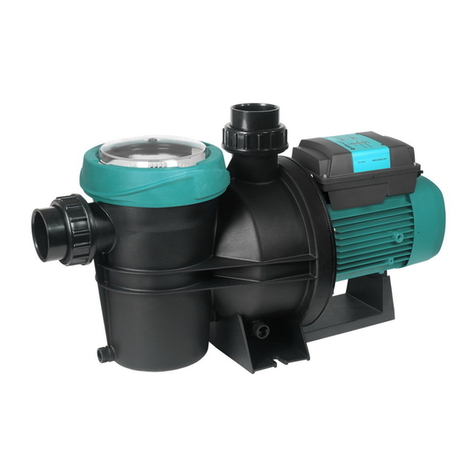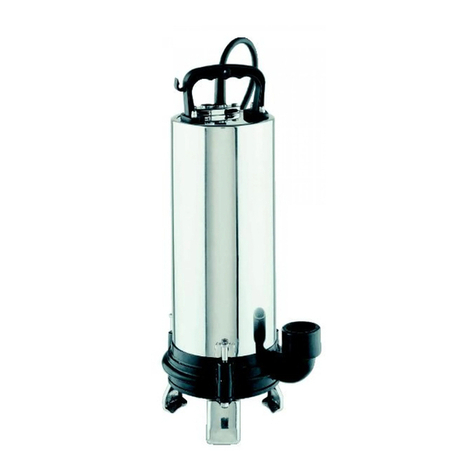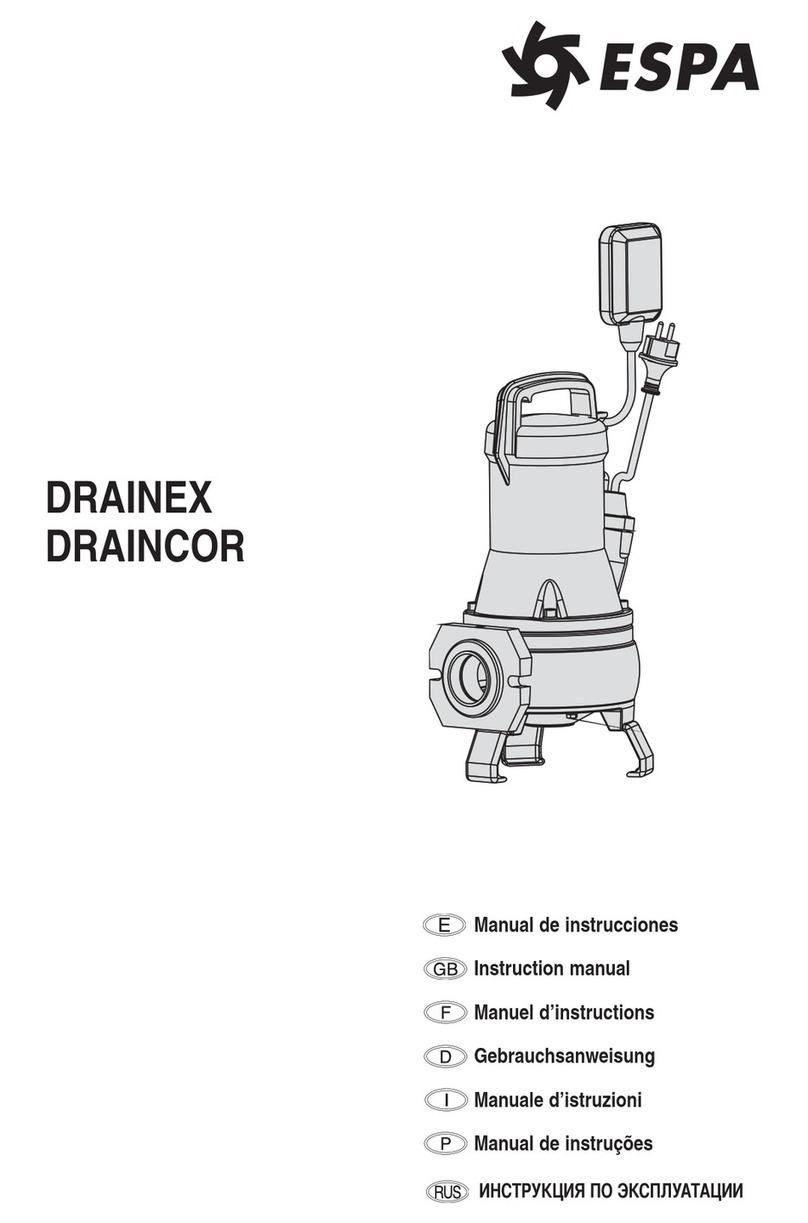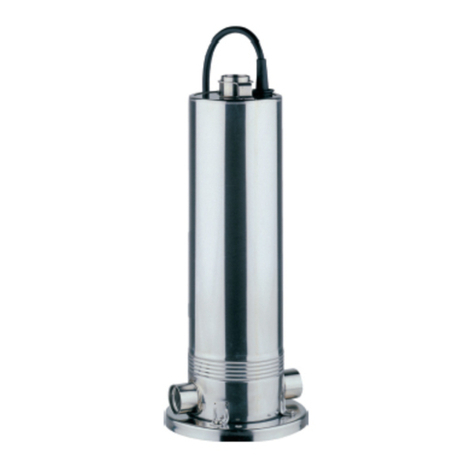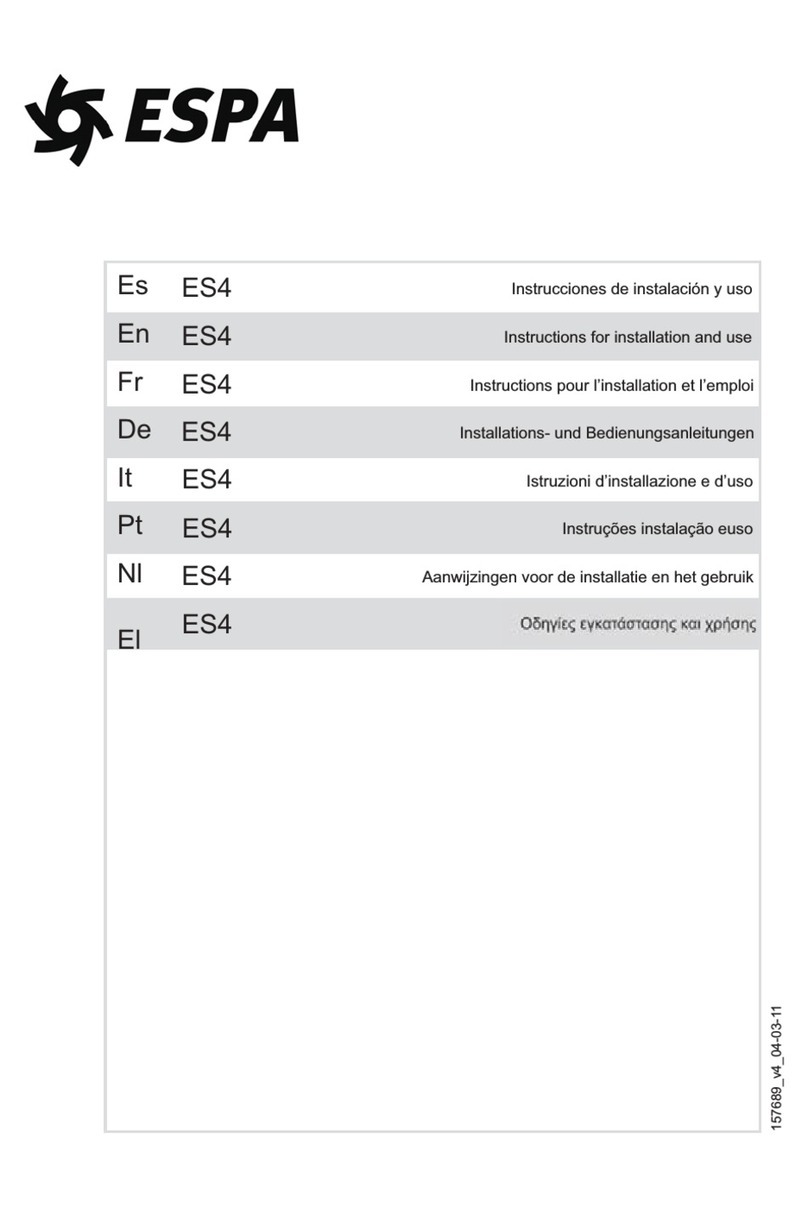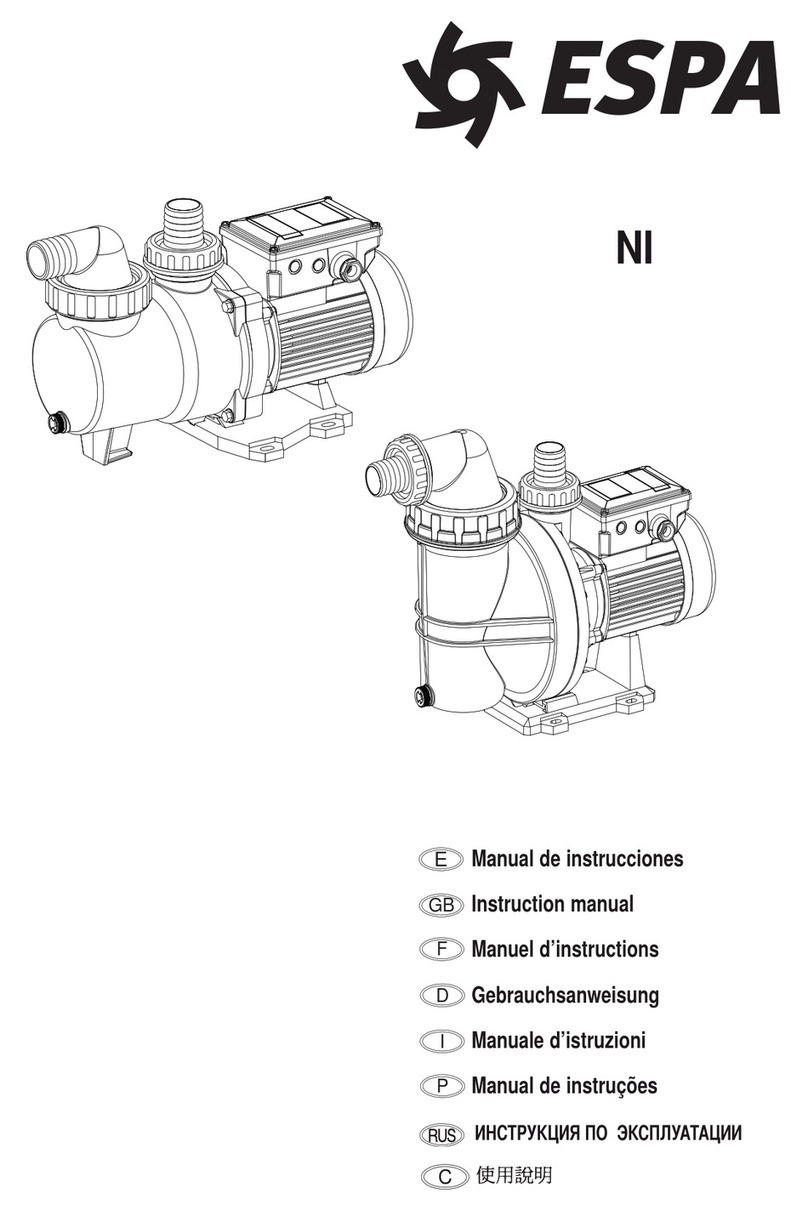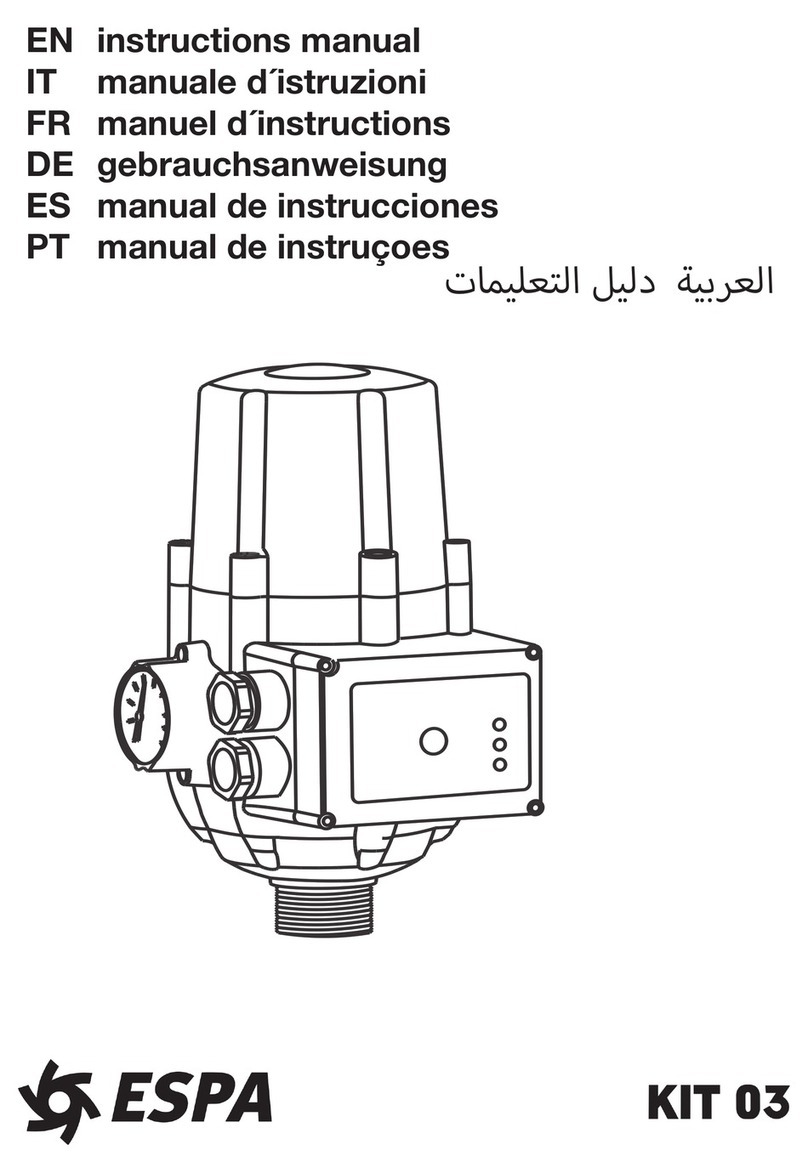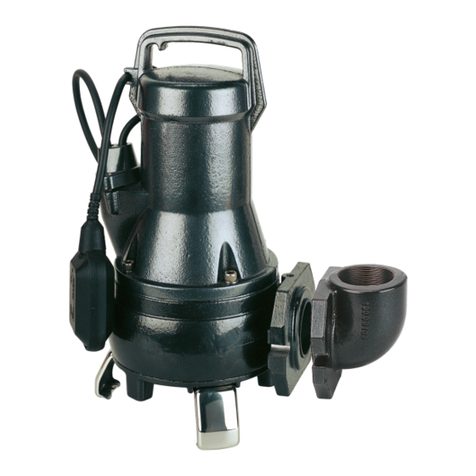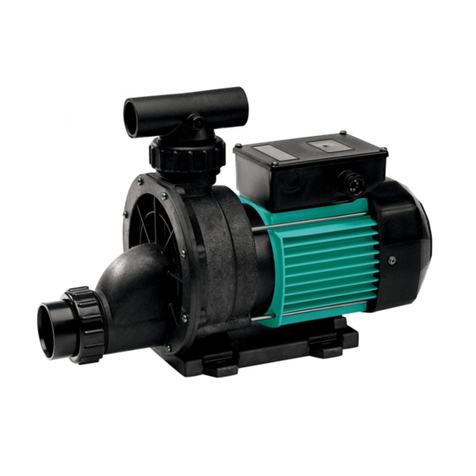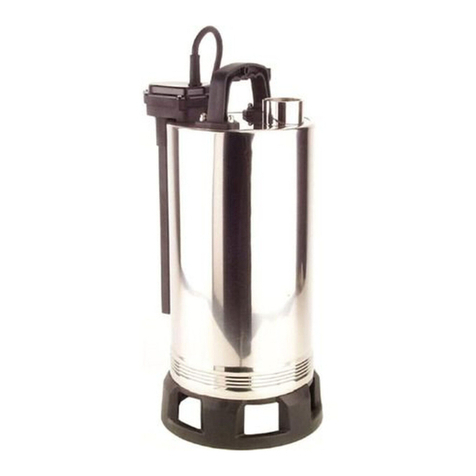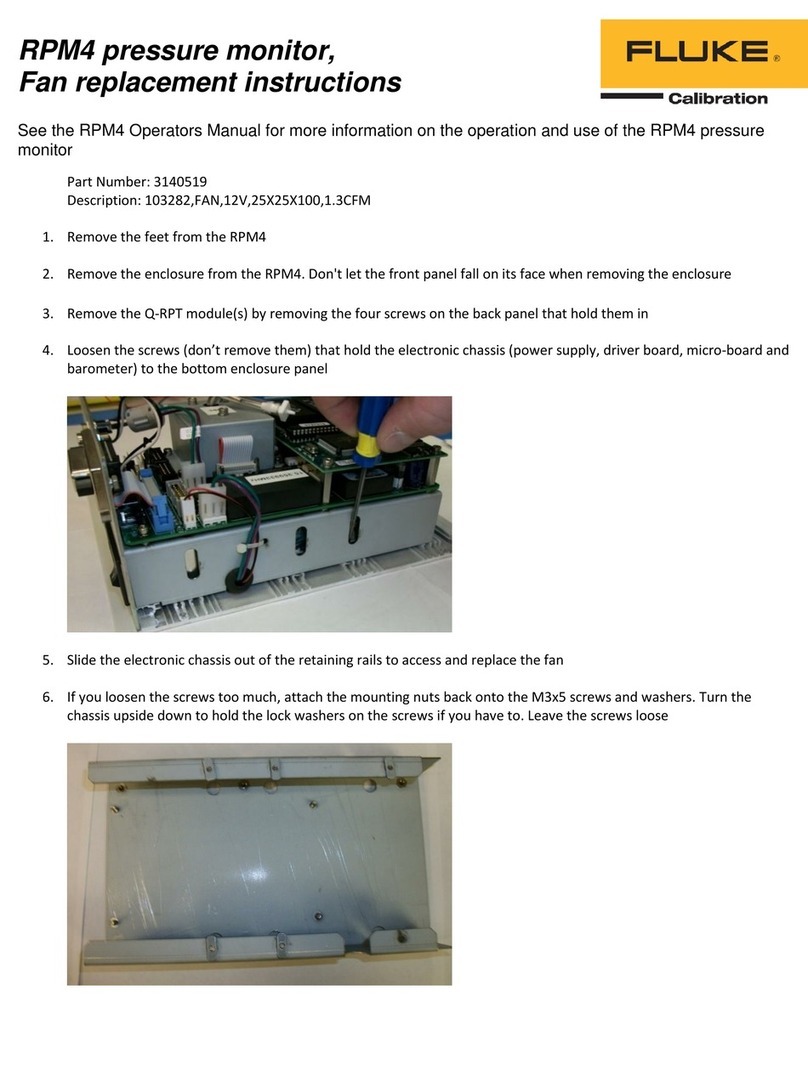
9
Instruction manual
Masonry swimming pools.3.3.
Preparatory work.a)
Place the section to be embedded (16) with its
protective plate (17) fixed in the metal mesh which
acts as a framework for the concrete.
Put it in position, bearing in mind that there must
be a distance of approximately 400 mm between
the centre of the section to be embedded and the
maximum height of the swimming-pool.
Position the surfaces of the part in a perpendicular
manner at the base of the swimming-pool.
The surface of the section to be embedded (16),
indicated by the letter S in (Fig. J), must be
aligned with the surface of the concrete once it
has been sprayed, so that the front plate (6) is
well placed once the ceramic wall-tiles have been
fixed in place. (Fig. J)
Once the concrete has been sprayed, remove the
protecting plate (17) and clean the surface of the
embedded section (16).
Attach the foam gasket (2) to the embedded
section (16).
Introduce the front section (3) into the embedded
section (16) and join together with screws (18)
(Fig. K)
Ensure that the rear body (3) is in correct position.
The word “HAUT” must be at the top part. (Fig. E)
Fitting front plate.3.4.
Pass the capillary pipe (7) through the hole in the
rear body (3) until it emerges from the end of the
hose on the side of the connections to the pump.
(Fig. N)
Fit the capillary pipe (7) by pressing it into the
pressure switch and ensuring that it is securely
connected.
Offer the front plate (6) up to the rear body (3),
ensuring that the rubber gasket is in place before
fixing the unit with the 3 M5 screws (12).
For sprayed concrete swimming-pools, place
joints no.(19) and/or (20) as necessary to adjust
the jet of the front plate (6).
Fitting the air hose.3.5.
The hose must be attached to the wall to form an
air trap, or at a level above the maximum height
of the swimming pool, so as to avoid emptying the
pool. Alternatively, it can be attached to the wall at
a height between the waterline and the maximum
height of the pool. Use a securing staple (10) to
ensure correct fitting.
Mount the filter (9) on the end of the hose in order
to prevent dirt entering. (Fig. P)
Fitting the pressure switch.3.6.
The hose must be attached to the wall to form an
air trap, or at a level above the maximum height
of the swimming pool, so as to avoid emptying the
pool. Use a securing staple (10) to ensure correct
fitting.
Cut the hose to the right length to reach the
panel (8) and mount the filter (9) on the end of
the hose in order to prevent dirt entering.
The maximum length to ensure correct operation
of the pressure switch is 25 metres. It is advisable
to cut the capillary pipe to just the right length to
reach the panel (8), ensuring that the connecting
pipe is passed through again. (Fig. Q)
Connect the capillary pipe (7) to the pressure
switch, ensuring that it is firmly connected.
(Fig. R)
Fitting the pump.3.7.
Pump installation and assembly must be carried
out by an authorised installer.
General safety warnings.a)
The equipment must be fitted following
current safety regulations for installing
swimming pools, and particularly standard
IEC 60364-7-702 and the special regulations
for each application.
The pump must be installed on a flat surface
and attached to the floor.
To ensure the safety of persons, the pump
must be installed at least 3.5 metres from the
swimming pool.
The mains electricity supply must be protected
by an automatic power-supply cut-out device,
a residual current circuit-breaker switch (Δ fn)
not exceeding 30 mA.
Fitting the pipes.b) (Fig. S)
The connection pipes to the pump for
distances of up to 3.5 metres must have a
minimum diameter of DN63. For distances of
up to 5 metres from the swimming pool piping
of DN75 must be used, and DN90 piping for
distances of more than 5 metres.
Flow valves must be fitted in the discharge
and suction pipes, so that the pump can be
removed for maintenance without draining the
swimming pool.
Particular care must be paid to ensure that
water cannot enter the pump motor or other
electrically powered parts of the installation.
